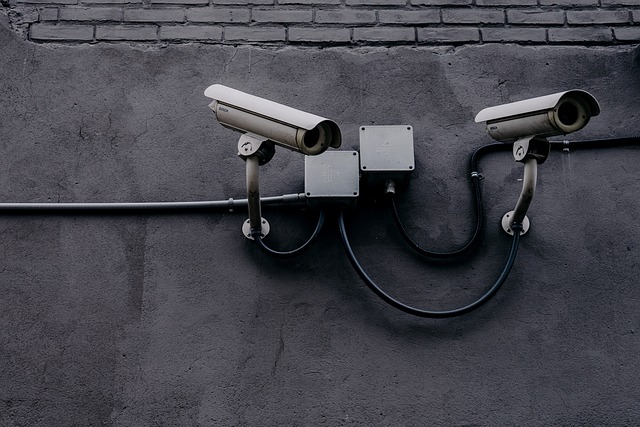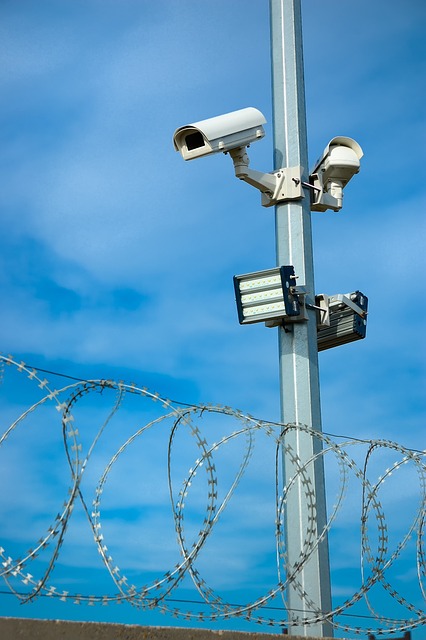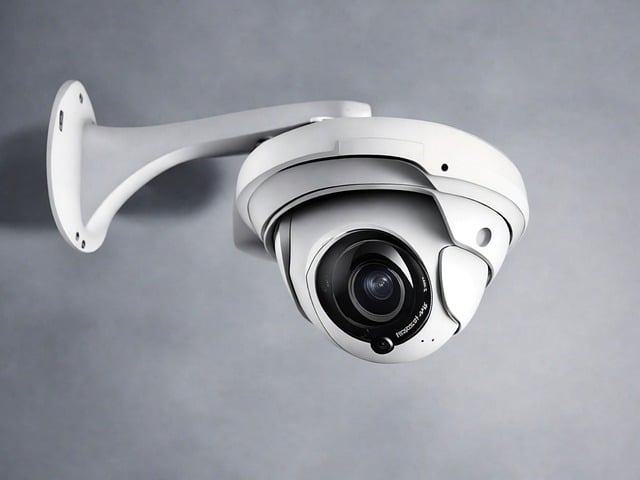Homeowners can significantly improve their property's security by implementing tailored CCTV and surveillance systems that address their specific security challenges. A range of home security solutions, including CCTV cameras, motion-activated lighting, and sophisticated surveillance systems, are available to suit various property types and vulnerabilities. Strategic placement of cameras, whether visible for deterrence or discreet for subtle monitoring, is crucial. Advanced systems come equipped with night vision, smartphone access, and versatile storage options like cloud or local servers for continuous monitoring. Integrating these systems with other smart home devices can provide a comprehensive security approach. It's essential to prioritize high-definition video resolution, reliable motion detection, and complete coverage of all entrances and vulnerable areas. Dome cameras are ideal for their wide-angle views and subtle design for indoor surveillance, while bullet cameras excel in outdoor monitoring with their durability and long-range capabilities. For robust data storage, consider hybrid systems that combine local recording with cloud options. Opt for scalable CCTV systems that can expand as your security needs evolve, ensuring that your home's defenses keep pace with changing requirements. Modern home security is significantly enhanced by AI-driven CCTV technology that actively monitors video feeds to identify real threats and differentiate them from benign activities. These intelligent surveillance solutions, when combined with advanced CCTV systems and robust networking capabilities, form a sophisticated defense network that offers both comprehensive coverage and intelligent threat detection, marking a significant advancement in home security technology. This integration within the Internet of Things (IoT) context enables real-time monitoring, remote access, customizable alerts, and instant notifications, creating a unified and adaptive security ecosystem for contemporary lifestyles.
When safeguarding your home, selecting the right surveillance equipment is paramount. This article demystifies the process of choosing effective home security solutions, from the basics of CCTV systems to the cutting-edge integration of AI for heightened alertness. We’ll explore essential features like resolution and field of view, night vision capabilities, and the critical role of networking in enabling remote access and real-time monitoring. With expert guidance on each aspect, you’ll be equipped to make informed decisions to enhance your home security.
- Understanding Your Home Security Needs: A Comprehensive Guide to Selecting Surveillance Equipment
- The Essentials of CCTV Systems for Home Security: Features and Considerations
- Evaluating Surveillance Cameras: Resolution, Field of View, and Night Vision Capabilities
- Advanced Surveillance Solutions: Integrating AI and Motion-Activated Alerts into Your Home Security System
- The Role of Networking in Modern Surveillance Systems: Ensuring Remote Access and Real-Time Monitoring
Understanding Your Home Security Needs: A Comprehensive Guide to Selecting Surveillance Equipment

When securing your home, it’s crucial to assess your specific security needs to determine the most effective surveillance equipment. Home security solutions come in various forms, from CCTV cameras to motion-activated lighting. The type of surveillance system you choose should reflect your property’s layout and potential vulnerabilities. For instance, high-traffic areas may require more visible cameras, while quieter spaces might benefit from discreet models that blend into the environment without compromising on security. Advanced CCTV systems offer a range of features, including night vision, remote access via smartphones, and storage options that can be cloud-based or local, ensuring you have a record of events at all times. It’s also wise to consider the integration of your surveillance system with other smart home devices for a comprehensive security approach. By understanding your home’s security needs and leveraging the latest in CCTV technology, you can create a robust defense against potential intruders, giving you peace of mind whether you’re at home or away.
The Essentials of CCTV Systems for Home Security: Features and Considerations

When safeguarding your home with a CCTV system, the key features to consider include high-definition video quality, reliable motion detection, and ample coverage of all entrances and vulnerable areas. Home security is paramount in today’s environment, and a well-placed CCTV system can deter intruders and provide evidence should an incident occur. Opt for cameras with at least 1080p resolution to ensure clear footage; this clarity is crucial for identifying individuals or understanding events as they unfold. Additionally, night vision capabilities are essential for around-the-clock surveillance, ensuring that your home remains under watch, even in low light conditions.
Selecting the right type of camera is also vital: dome cameras offer wide-angle views and a discreet appearance, which can be beneficial in deterring theft due to their unobtrusive nature. For exterior monitoring, bullet cameras are often preferred for their durability and long-range capabilities. When it comes to storage, consider hybrid systems that allow for both local recording and cloud storage; this provides a redundancy that can safeguard against data loss. Ensure that your system is scalable so you can add more cameras as needed to enhance coverage without compromising on quality or performance.
Evaluating Surveillance Cameras: Resolution, Field of View, and Night Vision Capabilities

When selecting surveillance cameras for your home security system, prioritize high-resolution capabilities to capture clear, detailed footage that can aid in identification and deterrence. CCTV systems with at least 1080p resolution are recommended as a minimum standard, with options for even higher resolutions like 4K becoming increasingly accessible and effective for discerning fine details. Consider the field of view each camera offers to ensure it covers the necessary area without blind spots, which can be a vulnerability in your home security setup. A wider field of view means fewer cameras are needed, potentially reducing costs while still providing comprehensive coverage.
Night vision is another critical feature for any surveillance system, as it allows for continuous monitoring regardless of lighting conditions. The best CCTV cameras for home security include infrared capabilities that enable them to see clearly in the dark, ensuring that your property remains under watch 24/7. Infrared sensors trigger night vision modes automatically, so you won’t miss a beat whether it’s day or night. Additionally, when comparing different models, look for cameras with advanced night vision that offer a balanced illumination to avoid overexposure or dark areas in the video feed. This ensures that the footage remains usable for identifying individuals and any activities taking place outside of standard daylight hours.
Advanced Surveillance Solutions: Integrating AI and Motion-Activated Alerts into Your Home Security System

In today’s technologically advanced world, enhancing your home security with cutting-edge solutions can provide a significant peace of mind. Advanced surveillance systems now integrate artificial intelligence (AI) and motion-activated alerts, offering a robust defense against potential intruders. AI-driven CCTV cameras are not just passive recorders; they actively analyze video feeds to detect unusual activities or faces that don’t match the usual patterns of your home environment. This sophisticated technology can differentiate between harmless movements like wildlife passing by and actual security breaches, ensuring that you receive real-time alerts only when necessary. By choosing a system that harnesses the power of AI, homeowners can benefit from intelligent surveillance that adapts to their specific safety needs, making their homes significantly safer places.
When considering an upgrade to your home security, it’s crucial to evaluate the capabilities of the surveillance equipment you’re investing in. Motion-activated alerts serve as an immediate line of defense by notifying you of movements within your property boundaries. These systems can be integrated with smartphones, allowing for instant notifications and remote monitoring. The integration of AI enhances this further by analyzing the video feeds to determine the nature of motion detected. This not only reduces false alarms but also ensures that when an alert is triggered, it’s a genuine security concern. By combining CCTV with AI technology, homeowners can enjoy a surveillance system that is both proactive and intelligent, offering comprehensive coverage and a layered approach to home security.
The Role of Networking in Modern Surveillance Systems: Ensuring Remote Access and Real-Time Monitoring

In contemporary home security scenarios, the integration of networking capabilities is paramount to facilitate remote access and real-time monitoring. CCTV systems have evolved beyond mere static cameras; they now offer seamless connectivity, allowing users to view live feeds from any location via smartphones or computers. This advancement ensures that homeowners can monitor their property remotely, providing a level of security that adapts to the dynamic nature of modern life. The sophistication of these systems also allows for the configuration of alerts and notifications, informing users instantly in case of suspicious activity, thereby enhancing the protective role of CCTV within the home environment.
Furthermore, the networking aspect of modern surveillance systems is critical for their scalability and interoperability. As homes become smarter with IoT-enabled devices, surveillance systems must be able to communicate with other smart devices, creating a cohesive security network that can adapt to various scenarios. This synergy not only strengthens home security but also streamlines the management of different systems, offering users a centralized platform for monitoring and controlling their entire home security infrastructure. The selection of appropriate networking equipment, therefore, becomes as important as the CCTV hardware itself, ensuring uninterrupted connectivity and data transmission that is essential for effective surveillance.
In conclusion, selecting the most appropriate surveillance equipment for your home security needs is a multifaceted decision that encompasses understanding your specific requirements, evaluating the features of CCTV systems, and exploring advanced solutions that integrate AI and motion-activated alerts. With a focus on resolution, field of view, and night vision capabilities, along with the critical role of networking for remote access and real-time monitoring, homeowners can significantly enhance their security posture. The key takeaway is that investing in a robust surveillance system tailored to your home’s unique needs can provide peace of mind and act as a formidable deterrent against potential threats. By following the insights and guidance outlined in this article on choosing surveillance equipment, you are well-equipped to make an informed decision that aligns with your home security goals.
